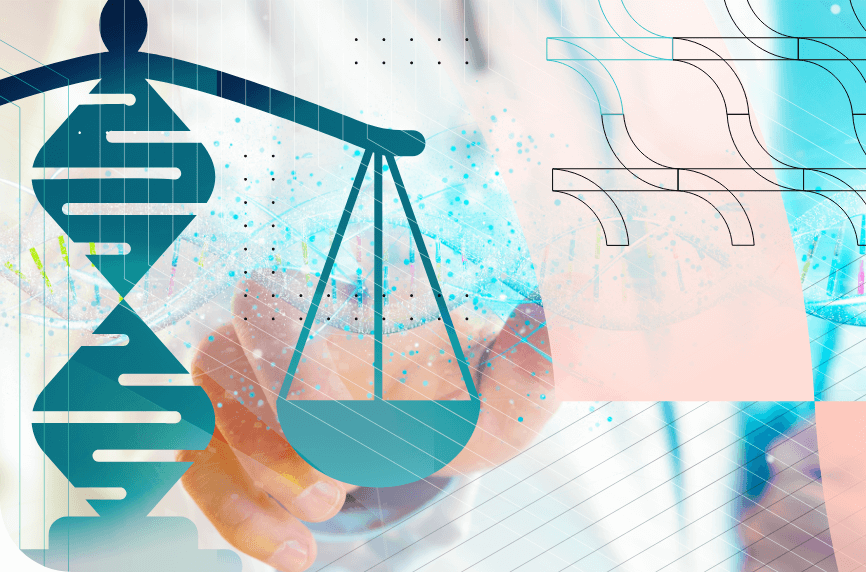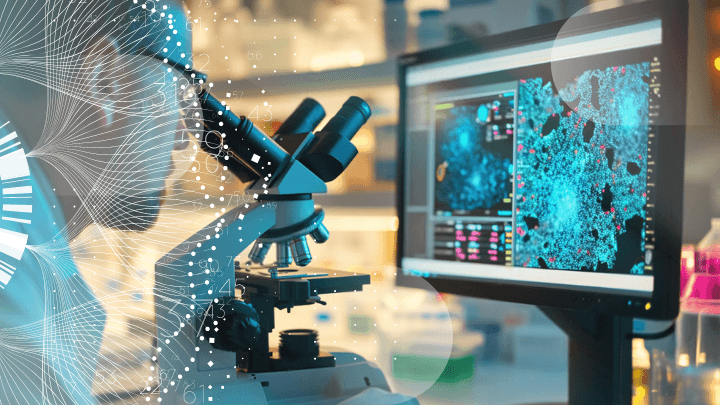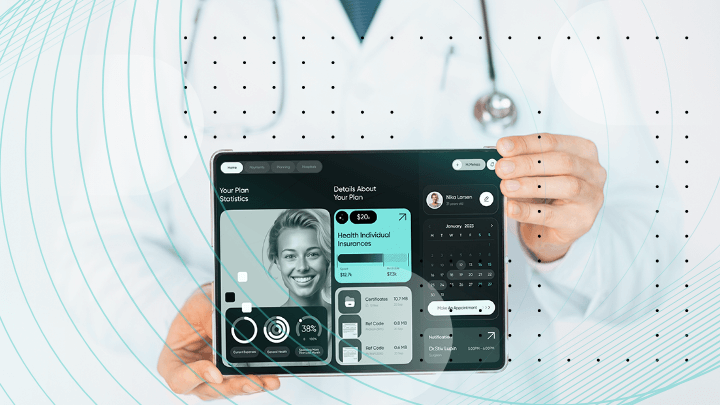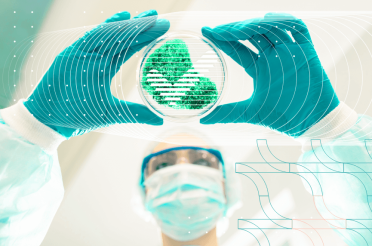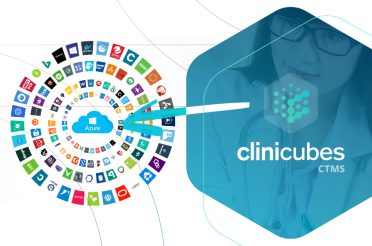The idea of bioethics was born with the development of the Universal Movement for Scientific Responsibility (UMSR) in Paris, France, in 1974.
The subject of bioethics is man’s moral duties towards humanity. This includes respect for humans and respect for nature. It is relevant to many aspects of modern-day life sciences – genetics, prenatal diagnostics, predictive medicine, as well as environmental health.
Bioethics is defined in the philosophy encyclopedia as “a branch of applied ethics dealing with the moral issues about life and death arising from the modern biological and medical research and health care practice”. It is divided into different branches: medical ethics, research ethics, environmental ethics, and public health ethics. Feminist bioethics is another critical perspective within the field, focusing on addressing issues of oppression and inequality.
Bioethics in healthcare brings understanding, knowledge, and respect among healthcare professionals about the patients as individuals and about medical care.
Key principles of bioethics in healthcare
The most important document outlining the principles of bioethics is Tom Beauchamp and James Childress’s Principles of Biomedical Ethics, which was published in 1979. It lays the fundamental principles of ethical theory or the so-called ‘four principles’ approach.
The four principles of ethics are beneficence, nonmaleficence, autonomy, and justice. The first two were formulated by Hippocrates and are encapsulated in the phrase “to help and do no harm”.
Beneficence
Beneficence is the principle of acting in contribution to the patient’s welfare, including providing necessary treatments and care. It is constructed from many moral rules – to protect and defend the rights, to do no harm, to help and rescue the people in need.
Although beneficence is defined in dictionaries as “the doing of good, the active promotion of good, kindness and charity”, regarding the medical practice it is closely associated with seeking the balance of good over harm in the care of patients.
Under the general principle, there are two others – the principle of positive beneficence (the prevention and removal of harm) and the principle of utility (analyzing and evaluating the balance between benefits and harms in moral life).
Nonmaleficence
The principle of nonmaleficence is described as ‘to do no harm’ and it consists of the rules not to kill, not to cause pain, not to offend, and not to deprive others of the goods of life. For medical practice, it means to weigh the burden of the interventions and treatment to the good outcomes so that the best course of action is chosen.
This means that in some cases the negative outcome of therapy should be avoided. However, in other cases, the negative side effects can be overruled by the severity of the patient’s condition (e.g., giving opioids to relieve the pain in terminally ill patients).
Autonomy
Autonomy is a philosophic term and it relates to the unconditional worth of the person and their right to make choices.
Although this principle is broadly accepted it has its limitations. Autonomy is not applicable for patients who lack the capacity and/or competence to act autonomously such as children and adults with psychiatric disorders.
Three points that are part of the autonomy principle are informed consent, truth-telling, and confidentiality.
- Informed consent is mandatory for any medical procedure and is valid only if the subject is competent to give it.
- Truth-telling includes the right of the patient to know their diagnosis or not.
- Confidentiality means that the medical professional is forbidden to disclose health information to someone other than the patient without their consent.
Legally required information, such as reporting gunshot wounds, sexually transmitted diseases, genetic risks, and others, overrule the principle of confidentiality.
Justice
The principle of justice has the meaning of fairness. The type of justice that is applicable for the medical practice is distributive justice but there are many ways to distribute the resources among the people in need.
Justice also includes removing conflicts of interest. For example, when a certain drug is preferred over another only in favour of the medical practitioner and not in the patient’s interest.
In addition to these principles, virtue ethics is another important framework in bioethical decision-making. Virtue ethics emphasizes the characteristics of a virtuous agent, promoting human flourishing and well-being, and is particularly relevant in addressing moral sensibilities rooted in historical medical practices.
Another important document for the principles of bioethics and, more precisely, of medical research is The Declaration of Helsinki, adopted by the 18th World Medical Association General Assembly in Helsinki, Finland, in June 1964.
Its principle states:
- Human must be included in medical trials but their life, health, integrity and rights must be protected;
- There should be research on the safety, effectiveness, efficiency, accessibility and quality of every intervention and therapy;
- The harm to the environment should be minimized while conducting research;
- If a subject is harmed during research they should be treated and compensated.
Ethical issues in biomedical research and practice
Naturally, bioethics raises an enormous number of moral issues and ethical dilemmas. The most common of them are presented here:
The issue with informed consent
Conventionally, informed consent is in the form of written and signed documents. However, an important part of it is informing the patients about their rights, the purpose of the study, the procedures to be undergone, the potential risks and/or benefits of participation, and alternative treatment plans.
For the consent to be true some points should be investigated. Firstly, it is important that the person who gives consent is capable of doing so, i.e. they are competent. Secondly, the individual has to have a full understanding of the procedure or treatment they receive. Lastly, the person should have the right not to consent. Ethical considerations surrounding research involving human subjects emphasize the importance of informed consent and highlight the challenges of maintaining anonymity in data collection.
The infamous Tuskegee Syphilis Study is an example of unethical conduction of study. It was going between 1932 and 72 and it aimed to observe the untreated syphilis. The participants (600 impoverished African Americans) were promised free of charge healthcare but were never informed that they had syphilis and that it was treatable. More than 120 of the participants died from syphilis and its complications because of the study. [10] This historical context underscores the necessity for strict ethical guidelines in human subjects research.
Use of placebo
Placebo treatment is used in randomized controlled trials and it aims to demonstrate the effectiveness of other treatments. The ethical use of placebos in clinical trials is questionable, particularly when effective treatments are already available.
There is a consensus in the research community that placebo control groups should not be included for life-threatening conditions or harmful non-reversing conditions when an effective treatment exists. Giving a placebo in those cases violates informed consent and threatens the patient-doctor’s trust.
Another question is also raised – is it ethical to prescribe a placebo only for its placebo effect and as a possible alternative pain relief?
Privacy and confidentiality
In this aspect the principle of autonomy and the principle of justice are applied.
It is accepted that confidentiality can be breached if:
- There is a legally authorized request;
- The patient’s best interest requires it;
- The society or a third party must be protected from a major harm or threat.
This includes infectious diseases, gunshot wounds, sexually-transmitted diseases, genetic risks, violence etc.
Conflicts of interest
These give bias of the research or practice and include bias towards the interests of hospital management, towards individuals’ perspectives and interests, towards moral beliefs, political bias, and others.
According to criteria for good ethical argumentation, such as the Rapoport rules, declarations of biases together with (or as part of) declarations of conflicts of interest in research papers may reduce the biases or the negative effect from them.
Animal testing
Animal testing is often seen as cruelty but historically is proven to be a mandatory part of the treatment development. If animal testing is not used in harmful ways and for one’s entertainment it is a legitimate need to improve the condition of people or save their lives.
A famous example of reduction of the animal testing gone bad is the thalidomide development. It was tested only in nonpregnant rodents and released on the market. It led to a huge number of birth defects all over the world and was withdrawn.
End-of-life decisions
End-of-life decisions regard do not resuscitate (DNR) requests, euthanasia, and physician-assisted suicide. An early DNR code would save the patient and family futile interventions and pain and it saves time and resources.
However, it is still a breach of the rule to not harm. Referring to end-of-life decisions, ethical and medical decisions should be carefully weighted as well as therapeutic benefits against risks.
The role of technology in bioethical decision making
Technology has an undeniable role in modern-day healthcare. An example of that is genetic testing. On one hand, it gives information about abnormalities, and thus, it gives the parents a choice if they want to keep it. On the other hand, a heated moral debate is raised. A human is humiliated as they are seen as an object. The parents are given a choice to modify and select their child. There should be respect for the autonomy of future persons.
These advancements also bring up ethical questions, particularly concerning patient autonomy and the moral implications of new technologies.
Another related example is the CRISPR-Cas9 technology that allows gene editing. While this revolutionary technology is proven to be accurate and beneficial for removing disease-inducing mutations, its use is limited. The main concerns about CRISPR are that altering the genome is unethical – that we should alter the disease without altering the individual.
Another relatable issue is exceeding control over the genetic material and developing so-called “designer babies” and by doing so genetically modified people will be less authentic and less real.
With the progress of artificial intelligence (AI) before us stands the question: is AI better than people including doctors? AI can resolve problems such as diagnostic errors, treatment mistakes, and waste of resources making it suitable for use by every medical specialist enabling them to practice high-performance medicine.
However, there is the possibility that machines will not work ethically and in the best interest of the patient. AI needs ethical guidelines and algorithms for human morals.
Software and bioethics: trends and challenges
Software has undeniably enhanced healthcare and biomedical research and it is becoming more and more available and needed. However, it also presents ethical challenges that must be carefully navigated. Ensuring transparency, accountability, privacy, and equity are essential to safely operate with it.
Software is used for maintaining human well-being in many aspects – in clinical research, electronic health records (EHR), telemedicine, genetic testing, personalized medicine, etc.
EHR trends are perfect examples of the expansion of software in aid of human health. Typically, they are used by physicians for keeping information about patients. In the new era with the increasing use of health-related sensors and devices, it becomes clearer that a hybrid version of EHR should exist. The integrated method is defined as a personal health record (PHR) and combines EHR and other personal health data imported by the patient.
Telemedicine benefits of software and technology development. Patient monitoring platforms focus on taking periodic, biomedical measurements from the patients often for very low cost and basic medical devices like blood pressure cuffs, thermometers, and digital scales. Telemedicine information can be integrated with the EHR system.
The main concern about machine learning software is the balance of privacy rights against the needs of public health and clinical practice, the ethical use of this technology, and respecting the standards in health policy. Producing better and ethically optimized tools for healthcare professionals is a multidisciplinary task and requires the collaboration of the informatics and ethics communities.
An important ethical consideration in the context of software and technology is the management of health care costs. The government’s role in ensuring equitable access to healthcare, while addressing the financial responsibilities and ethical dilemmas surrounding these costs, is crucial for creating a just society.
Discover how we can help outsource Healthcare projects efficiently Speak to an expert today, and see how our on-demand IT talent and augmented teams can efficiently deliver value at every step of your roadmap.

Ethical decision-making frameworks in bioethics
Ethical decision-making frameworks provide structured approaches to address moral dilemmas in healthcare and biomedical research with the application of bioethical tenets. These frameworks help ensure that decisions are made consistently, transparently, and with respect to key ethical principles.
In medical practice a series of steps are taken for respecting bioethics:
- The first step is securing ethics of accuracy with a focus on diseases. In this step, clinicians have to make a prognosis and hypothesis with confidence while knowing the risks of inaccuracy.
- The second step is the ethics of comprehension and understanding, focusing on personalized medicine. This step emphasizes patients’ biographies and feelings.
- The third step is considering the ethics of situational awareness with a focus on providers. This part is based on awareness, reflection and teamwork.
- The fourth step is ethics of deliberation, focusing on the patient-provider relationship. It includes shared goals of clinical care and values despite the uncertainties of the treatment’s success. Communication is a crucial part of this step – discussion about the means of the treatment and its end. The best scenario in this step is to reach a consensus.
Emerging ethical problems in genomic medicine
It is well-known about the powerful tool of the twenty-first century called CRISPR. While its many applications developed mostly for different types of cancer are life-saving, others, for example, editing germlines are quite concerning.
Genomic modifications for enhancement and genome-editing trials are permitted only for compelling reasons and under strict oversight. CRISPR research came to the conclusion that the technology can be used even for editing RNA which can raise more issues. Concerns include the issue of power and limitation of the technology, the issues related to the modified organisms and their offspring, and issues about the dynamic between the altered genome and the biological phenotypes.
The main ethical dilemma is about the application of CRISPR on human embryos. It can have unexpected positive or negative effects on the life of the person throughout their lifespan or their future generations. Risks vary between harms, irreversible side effects, death, and mutation of the heritable germline.
Genome editing may lead to the belief that the human population can and should be improved by controlled breeding. The ethical issue is also the fair distribution of the technology across all layers of society worldwide while limiting it to somatic cells for treating genetic diseases. Equitable access to genomic medicine is a must. The high costs associated with genomic testing and personalized treatments can exacerbate existing healthcare disparities, limiting access for underrepresented and economically disadvantaged populations.
Bioethics and end-of-life care
End-of-life care in bioethics addresses the ethical dilemmas and moral considerations surrounding the treatment and support of individuals nearing the end of their lives. Key issues include respecting patient autonomy in decision-making, ensuring informed consent for treatments, and balancing the principles of beneficence and non-maleficence—providing care that benefits the patient while minimizing harm.
Ethical debates often focus on the use of life-sustaining technologies, pain management, and the appropriateness of palliative versus curative treatments. Additionally, the ethical implications of assisted suicide and euthanasia are contentious topics within this realm, raising questions about the moral right to die and the role of healthcare providers in end-of-life decisions.
For example, when dealing with a wish for euthanasia or physician-assisted suicide, the bioethical imperatives allowing it are autonomy and beneficence, and the opposing imperative is nonmaleficence.
Ethical ethical issues arising in reproductive medicine
Ethical considerations in reproductive medicine encompass a range of complex issues related to the use of technologies such as in vitro fertilization (IVF), genetic screening, surrogacy, the moral status of embryos, the implications of genetic selection and potential eugenics, and the social and legal complexities of surrogacy arrangements.
Navigating these ethical challenges requires a careful balance between advancing medical possibilities and upholding the dignity and human rights of all individuals involved including embryos.
Some reproduction decision-making based on genetic counseling raises the question: is it necessary to know? Interpreting gene variants can be complex, there are additional contributing factors such as epigenetic effects, environmental impacts, and modifier genes.
Genetic expression in phenotype is variable which means that some individuals are less severely affected than others. This can include non-penetrance gene expression – an individual may have a disease-associated genotype without having any phenotype as a result. These make interpreting and determining the results uncertain. [29]
Legal and policy implications of bioethics
The legal and policy implications of bioethics are profound, influencing the regulation and practice of healthcare and biomedical research. Bioethical principles guide the development of laws and policies to protect patient rights, ensure informed consent, and uphold standards of care.
Topics such as genetic privacy, end-of-life decisions, reproductive rights, and the use of emerging technologies like CRISPR are at the forefront of legal debates. Policymakers’ mission is to balance innovation with ethical safeguards, addressing concerns about equity, access, and potential misuse of medical advancements.
Legal frameworks aim to provide clear guidelines for practitioners while ensuring public trust and protecting vulnerable populations. However, the law is not black and white and can be interpreted differently; in some cases, it holds a conflict between norms and societal values.
Legal considerations alone are not enough for making good health care decisions so good ethics should be included in the process.
Future directions in bioethics and software integration
Future directions in bioethics and software integration will increasingly focus on addressing ethical challenges posed by advancements in artificial intelligence (AI) and big data in healthcare.
As AI-driven tools and software applications become more prevalent in diagnostics, treatment planning, and personalized medicine, ensuring transparency, accountability, and fairness in algorithmic decision-making will be paramount.
Bioethicists will need to develop frameworks that address issues of bias, data privacy, and the potential for AI to exacerbate healthcare disparities. In the future, it will be necessary to have guidelines to protect patient confidentiality and promote equitable access to digital health services.
Collaboration between technologists, healthcare professionals, and ethicists will be crucial in creating innovative yet ethically sound solutions that enhance patient care while safeguarding human values and rights.
Sources
Fagot-Largeault, Anne. “Le devenir de la bioéthique” [Bioethics destiny]. Comptes rendus biologies vol. 338,8-9 (2015): 534-42. doi:10.1016/j.crvi.2015.07.001
N. Bunnin & J. Yu. 2004. The Blackwell Dictionary of Western Philosophy. Oxford: Blackwell: 84.
Before, During, and After I Learned My PI Falsified Data – A seminar given at NIEHS by Mary Allen, Ph.D., Research Assistant Professor and Responsible Conduct of Research Coordinator, University of Colorado.
Taj, Rizwan and Khan, Asima (2018) “Importance of bioethics in healthcare,” Pakistan Journal of Neurological Sciences (PJNS): Vol. 13: Iss. 1, Article 2.
Matthew Shea, Forty Years of the Four Principles: Enduring Themes from Beauchamp and Childress, The Journal of Medicine and Philosophy: A Forum for Bioethics and Philosophy of Medicine, Volume 45, Issue 4-5, August 2020, Pages 387–395, https://doi.org/10.1093/jmp/jhaa020
Varkey, Basil. “Principles of Clinical Ethics and Their Application to Practice.” Medical principles and practice : international journal of the Kuwait University, Health Science Centre vol. 30,1 (2021): 17-28. doi:10.1159/000509119
Munyaradzi, Malware. “Critical reflections on the principle of beneficence in biomedicine.” The Pan African medical journal vol. 11 (2012): 29.
World Medical Association. “World Medical Association Declaration of Helsinki: ethical principles for medical research involving human subjects.” JAMA vol. 310,20 (2013): 2191-4. doi:10.1001/jama.2013.281053
Nijhawan, Lokesh P et al. “Informed consent: Issues and challenges.” Journal of advanced pharmaceutical technology & research vol. 4,3 (2013): 134-40. doi:10.4103/2231-4040.116779
Christina Shree Chopra, Aria Darbandi, Daniel C. Neubauer, Christopher Reid, Chapter 97 – Population and environmental specific considerations, Editor(s): Adam E.M. Eltorai, Jeffrey A. Bakal, Paige C. Newell, Adena J. Osband, In Handbook for Designing and Conducting Clinical and Translational Research, Translational Surgery, Academic Press, 2023, Pages 629-633, ISBN 9780323903004, https://doi.org/10.1016/B978-0-323-90300-4.00097-5.
Finniss, Damien G et al. “Biological, clinical, and ethical advances of placebo effects.” Lancet (London, England) vol. 375,9715 (2010): 686-95. doi:10.1016/S0140-6736(09)61706-2
Lau, J T F et al. “Ethical issues related to the use of placebo in clinical trials.” Hong Kong medical journal = Xianggang yi xue za zhi vol. 9,3 (2003): 192-8.
Zhang, Hui et al. “Patient privacy and autonomy: a comparative analysis of cases of ethical dilemmas in China and the United States.” BMC medical ethics vol. 22,1 8. 2 Feb. 2021, doi:10.1186/s12910-021-00579-6
Noroozi, Mahshad et al. “Challenges of Confidentiality in Clinical Settings: Compilation of an Ethical Guideline.” Iranian journal of public health vol. 47,6 (2018): 875-883.
Hofmann, Bjørn. “Biases in bioethics: a narrative review.” BMC medical ethics vol. 24,1 17. 6 Mar. 2023, doi:10.1186/s12910-023-00894-0
Petetta, Francesca, and Roberto Ciccocioppo. “Public perception of laboratory animal testing: Historical, philosophical, and ethical view.” Addiction biology vol. 26,6 (2021): e12991. doi:10.1111/adb.12991
Sultan, Hala et al. “DNR and COVID-19: The Ethical Dilemma and Suggested Solutions.” Frontiers in public health vol. 9 560405. 12 May. 2021, doi:10.3389/fpubh.2021.560405
Savulescu, Julian, and Guy Kahane. “The moral obligation to create children with the best chance of the best life.” Bioethics vol. 23,5 (2009): 274-90. doi:10.1111/j.1467-8519.2008.00687.x
Jasanoff, S., Hurlbut, J., & Saha, K. (2015). Crispr democracy: Gene editing and the need for inclusive deliberation. Issues in science and technology, 32(1), 25-32.
Steinbock, Bonnie. “Designer babies: choosing our children’s genes.” Lancet (London, England) vol. 372,9646 (2008): 1294-5. doi:10.1016/s0140-6736(08)61538-x
Topol, E.J. High-performance medicine: the convergence of human and artificial intelligence. Nat Med 25, 44–56 (2019). https://doi.org/10.1038/s41591-018-0300-7
Abdullah, Yasser Ibrahim et al. “Ethics of Artificial Intelligence in Medicine and Ophthalmology.” Asia-Pacific journal of ophthalmology (Philadelphia, Pa.) vol. 10,3 (2021): 289-298. doi:10.1097/APO.0000000000000397
Roehrs, Alex et al. “Personal Health Records: A Systematic Literature Review.” Journal of medical Internet research vol. 19,1 e13. 6 Jan. 2017, doi:10.2196/jmir.5876
Baker, John, and Anthony Stanley. “Telemedicine Technology: a Review of Services, Equipment, and Other Aspects.” Current allergy and asthma reports vol. 18,11 60. 26 Sep. 2018, doi:10.1007/s11882-018-0814-6
Goodman, Kenneth W. “Ethics in Health Informatics.” Yearbook of medical informatics vol. 29,1 (2020): 26-31. doi:10.1055/s-0040-1701966
Forte, D.N., Kawai, F. & Cohen, C. A bioethical framework to guide the decision-making process in the care of seriously ill patients. BMC Med Ethics 19, 78 (2018). https://doi.org/10.1186/s12910-018-0317-y
Brokowski, Carolyn, and Mazhar Adli. “CRISPR Ethics: Moral Considerations for Applications of a Powerful Tool.” Journal of molecular biology vol. 431,1 (2019): 88-101. doi:10.1016/j.jmb.2018.05.044
Ong, W Y et al. “Ethical dilemmas in the care of cancer patients near the end of life.” Singapore medical journal vol. 53,1 (2012): 11-6.
Dive, Lisa et al. “Ethical considerations in gene selection for reproductive carrier screening.” Human genetics vol. 141,5 (2022): 1003-1012. doi:10.1007/s00439-021-02341-9
Duthie, Katherine et al. “Ethics and the Law.” HEC forum : an interdisciplinary journal on hospitals’ ethical and legal issues vol. 29,4 (2017): 347-358. doi:10.1007/s10730-017-9328-1
Bali, Jatinder et al. “Artificial intelligence (AI) in healthcare and biomedical research: Why a strong computational/AI bioethics framework is required?.” Indian journal of ophthalmology vol. 67,1 (2019): 3-6. doi:10.4103/ijo.IJO_1292_18









